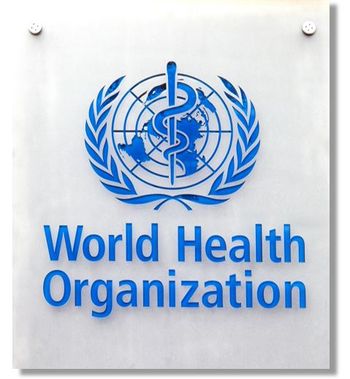
Nonalcoholic Fatty Liver Disease: Update on Evaluation and Treatment
Nonalcoholic steatohepatitis (NASH) was first reported by Ludwig and associates in a series of patients who had no significant history of alcohol intake but whose liver histology resembled that of alcoholic liver disease.
Nonalcoholic steatohepatitis (NASH) was first reported by Ludwig and associates1 in a series of patients who had no significant history of alcohol intake but whose liver histology resembled that of alcoholic liver disease. Since then, a spectrum of pathological conditions that range morphologically from hepatic steatosis, through steatohepatitis, to cirrhosis has been described. The term nonalcoholic fatty liver disease (NAFLD) is currently used to encompass these overlapping conditions.
As I discuss here, NAFLD is gaining clinical importance because of its increasing prevalence and because it is associated with a heightened risk of coronary artery disease2; moreover, the disease can potentially progress to hepatocellular cancer.
PREVALENCE OF NAFLD
Screening studies by the Third National Health and Nutrition Examination Survey (NHANES III) based on liver function tests indicate the prevalence of NAFLD in the general population ranges from 3%, when persons with diabetes are excluded and an alanine aminotransferase (ALT) level higher than 43 U/L is used as an indicator of NAFLD,3 to 23%, when persons with diabetes are included and NAFLD is defined by any measurement of ALT, aspartate aminotransferase (AST), or γ-glutamyltransferase higher than 30 U/L.4 Studies of selected populations that use liver imaging, autopsy results, or biopsy studies to define NAFLD suffer from selection biases and may not reflect the true prevalence of NAFLD.5
Obesity has a well-recognized association with NAFLD. An autopsy study found NAFLD was present in 19% of obese persons compared with 3% of those of normal weight.6 Because overweight and obesity are associated with insulin resistance, a rise in the prevalence of NAFLD can be anticipated as the “diabesity” epidemic spreads in the general population.7,8
ETIOLOGY OF NAFLD
NAFLD is primarily the result of insulin resistance9 and may reflect the hepatic manifestations of the metabolic syndrome.10 A “2-hit” hypothesis is proposed to explain the progression to NASH.11
The first event noted in NAFLD is fat accumulation in the liver. This typically occurs in the setting of insulin resistance. Increased hepatocyte fat content impedes mitochondrial function, resulting in lipid peroxidation. The fatty acid–derived free radicals trigger cytokine production, which augments oxidative stress.
In the second “hit,” lipid peroxides adversely affect adipokine production (leptin, adiponectin, and ghrelin) and increase levels of tumor necrosis factor-α, which results in inflammation and activation of stellate cells. This process is thought to progress to liver scarring and cirrhosis.
CLINICAL EVALUATION
Signs and symptoms. Although some patients with NAFLD have fatigue and right upper quadrant discomfort, most are asymptomatic and present with elevated serum aminotransferase levels. The majority of patients are overweight or have visceral adiposity9; however, specific physical findings are lacking except for hepatomegaly, which occurs in up to 50% of those with NAFLD.12
History. Because insulin resistance plays an important role in NAFLD, conditions associated with insulin resistance and diabetes mellitus should be assessed. These and other secondary causes of NAFLD are listed in the Table. Relevant history includes a family history of diabetes mellitus, a history of bariatric surgery, use of drugs associated with NAFLD and, in women, findings that indicate polycystic ovary disease, such as menstrual irregularities and acanthosis nigricans.
The diagnosis of NAFLD requires a history of minimal ethanol consumption. Intake levels of 2 standard drinks daily (20 g of ethanol daily, 140 g weekly) for men and 1 standard drink daily (70 g weekly) for women are endorsed as the acceptable threshold to define nonalcoholic.
Laboratory studies. Because NAFLD can coexist with other liver diseases,13 it is important to test for hepatitis B and hepatitis C; measure fasting iron, antinuclear and anti–smooth muscle antibody, antimitochondrial antibody and, if the patient is younger than age 40, ceruloplasmin levels; and order serum protein electrophoresis. Serum ALT and AST levels often range up to 4 times the upper limits of normal, although they may be normal.14 Insulin resistance, manifested as hyperglycemia and hypertriglyceridemia, is frequently noted.
Imaging studies. On an ultrasound scan, a fatty liver appears diffusely echogenic (the so-called bright liver). A CT scan can reveal low-density liver parenchyma, which indicates steatosis. MRI can also be used but is usually limited by cost and availability. These modalities can detect NAFLD when there is a greater than 30% fat deposition in the liver.15 Using a cutoff of 33% fat, ultrasonography has a sensitivity of 100% whereas CT has a sensitivity of 93%. However, their positive predictive values are only 62% and 76%, respectively.
Liver biopsy. The decision to perform a liver biopsy is an important management consideration, although it is rarely necessary in the primary care setting. In 20% to 25% of patients who have NASH, the disease progresses to cirrhosis16; these patients are at increased risk for hepatocellular carcinoma.17 A liver biopsy is the only way to make a definitive diagnosis of NASH.
Many obese patients with NASH have advanced liver fibrosis and cirrhosis with normal serum aminotransferase values.14 Thus, scoring systems that use risk factors to predict the presence of fibrosis (including age, diabetes mellitus, and obesity) are being developed to help gauge the need for liver biopsy.
TREATMENT RECOMMENDATIONS
Lifestyle interventions. The treatment rationale for NAFLD is based on its proposed “2-hit” pathogenesis. Therapeutic lifestyle interventions- including increased physical activity and dietary modification to reduce body weight and improve insulin sensitivity-are of primary importance. A review of lifestyle interventions in patients with NAFLD found 15 studies, which reported liver tests, hepatic imaging, or liver biopsy findings as outcome measurements, showed improvements after the intervention. 18 One study, however, indicated that liver histological findings worsened when weight loss exceeded 1.6 kg per week19; this suggests that such rapid weight loss should be avoided.
The lifestyle intervention employed in the Diabetes Prevention Program, considered the “gold standard,” can be administered in an outpatient setting.20 This is a comprehensive home-based diet and exercise program; it is prescribed and monitored by a lifestyle “coach” in group-based sessions that initially meet weekly and then transition to monthly reinforcement sessions as the program progresses. (Details about the Diabetes Prevention Program are available at
Pharmacological therapy. Pharmacological interventions to reduce oxidative stress and to increase insulin sensitivity appear promising, although few clinical trials have been conducted. A Cochrane review of randomized clinical trials that used antioxidants (including vitamins E and C) found some, although not clinically relevant, improvement in AST levels; the radiological and histological findings were too limited to draw any definite conclusions.21
The potential role of drugs that target insulin resistance to treat NAFLD has been systematically reviewed. 22 Some studies have shown that metformin reduces serum aminotransferase levels; however, extensive data on histological improvement are lacking. Studies of thiazolidinediones, including pioglitazone and rosiglitazone, have shown short-term improvements in liver enzyme levels and posttreatment liver biopsies. However, the use of thiazolidinedione medications is associated with weight gain.23
Currently, lifestyle interventions are the only recommended treatment for NAFLD. Certainly the development of pharmacological approaches that effectively treat NASH and reduce its sequelae will require large, prospective, randomized clinical trials.
Therapeutic Agents in This Article
Amiodarone* (Cordarone, Pacerone)
Metformin* (Glucophage)
Methotrexate* (Trexall)
Pioglitazone (Actos)
Rosiglitazone (Avandia)
Tamoxifen* (Nolvadex)
*Available in a generic formulation.
References:
REFERENCES:
1
. Ludwig J, Viaggiano TR, McGill DB, Oh BJ. Nonalcoholic steatohepatitis: Mayo Clinic experiences with a hitherto unnamed disease.
Mayo Clin Proc.
1980;55:434-438.
2
. Targher G, Arcaro G. Non-alcoholic fatty liver disease and increased risk of cardiovascular disease.
Atherosclerosis.
2007;191:235-240.
3
. Ruhl CE, Everhart JE. Determinants of the association of overweight with elevated serum alanine aminotransferase activity in the United States.
Gastroenterology.
2003;124:71-79.
4
. Clark JM, Brancati FL, Diehl AM. The prevalence and etiology of elevated amino transferase levels in the United States.
Am J Gastroenterol.
2003;98:960-967.
5
. Falck-Ytter Y, Younossi ZM, Marchesini G, McCullogh AJ. Clinical features and natural history of nonalcoholic steatosis syndrome.
Semin Liver Dis.
2001;21:17-26.
6
. Wanlass IR, Lentz JS. Fatty liver hepatitis (steatohepatitis) and obesity: an autopsy study with analysis of risk factors.
Hepatology.
1990;12: 1106-1110.
7
. Flegal KM, Carroll MD, Ogden CL, Johnson CL. Prevalence and trends in obesity among US adults.
JAMA.
2003;289:76-80.
8
. Mokdad AH, Bowman BA, Ford ES, et al. The continuing epidemics of obesity and diabetes in the United States.
JAMA.
2001;286:1195-2000.
9
. Marchesini G, Brizi M, Bianchi G, et al. Nonalcoholic fatty liver disease: a feature of the metabolic syndrome.
Diabetes.
2001;50:1844-1850.
10
. Marchesini G, Bugianesi E, Forlani G, et al. Nonalcoholic fatty liver, steatohepatitis, and the metabolic syndrome.
Hepatology.
2003;37:917-923.
11
. Day CP, James OF. Steatohepatitis: a tale of two “hits”?
Gastroenterology.
1998;114:842-845.
12
. Bacon BR, Farahvash MJ, Janney CG, Neuschwander- Tetri BA. Nonalcoholic steatohepatitis: an expanded clinical entity.
Gastroenterology
. 1994;107: 1103-1109.
13
. Brunt EM, Ramrahkiani S, Cordes BG, et al. Concurrence of histologic features of steatohepatitis with other forms of chronic liver disease.
Mod Pathol.
2003;16:49-56.
14
. Garcia-Monzon C, Martin-Perry E, Iascono OL, et al. Characterization of pathogenic and prognostic factors of nonalcoholic steatohepatitis associated with obesity.
J Hepatol.
2000;33:716-724.
15
. Saadeh S, Younossi ZM, Remer EM, et al. The utility of radiological imaging in nonalcoholic fatty liver disease.
Gastroenterology.
2002;123:745-750.
16
. Matteoni CA, Younossi ZM, Gramlich T, et al. Nonalcoholic fatty liver disease: a spectrum of clinical and pathological severity.
Gastroenterology
. 1999; 116:1413-1419.
17
. Ratziu V, Bonyhay L, Di Martino V, et al. Survival, liver failure, and hepatocellular carcinoma in obesity-related cryptogenic cirrhosis.
Hepatology.
2002;35:1485-1493.
18
. Wang RT, Koretz RL, Yee HF Jr. Is weight reduction an effective therapy for nonalcoholic fatty liver? A systematic review.
Am J Med.
2003;115:554-559.
19
. Andersen T, Gluud C, Franzmann MB, Christofferson P. Hepatic effects of dietary weight loss in morbidly obese subjects.
J Hepatol.
1991;12: 224-229.
20
. Diabetes Prevention Program Research Group. Reduction in the incidence of type 2 diabetes with lifestyle intervention or metformin.
N Engl J Med.
2002;346:393-403.
21
. Lirussi F, Azzalini L, Orando S, et al. Antioxidant supplements for non-alcoholic fatty liver disease and/or steatohepatitis.
Cochrane Database Syst Rev.
2007:(1):CD004996.
22
. Chavez-Tapia NC, Barrientos-Gutierrez T, Tellez-Avila FI, et al. Insulin sensitizers in treatment of nonalcoholic fatty liver disease: systematic review.
World J Gastroenterol.
2006;12:7826-7831.
23.
Neuschwander-Tetri BA, Brunt EM, Wehmeier KR, et al. Improved nonalcoholic steatohepatitis after 48 weeks of treatment with PPAR-gamma ligand rosiglitazone.
Hepatology.
2003;38:1008-1017.
Newsletter
Enhance your clinical practice with the Patient Care newsletter, offering the latest evidence-based guidelines, diagnostic insights, and treatment strategies for primary care physicians.

















































































































































































































































































